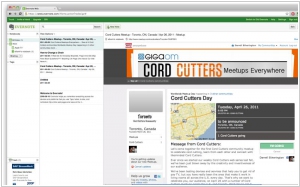DropBox vs Evernote
August 26, 2023 | Author: Michael Stromann
33
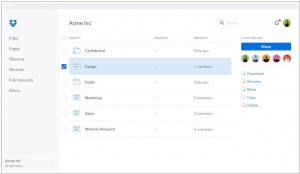
Dropbox is a Web-based file hosting service that uses cloud computing to enable users to store and share files and folders with others across the Internet using file synchronization. There are both free and paid services, each with varying options. In comparison to similar services, Dropbox offers a relatively large number of user clients across a variety of desktop and mobile operating systems.
Dropbox and Evernote are two popular productivity tools that cater to different aspects of organizing and managing information. Dropbox is primarily a cloud storage and file synchronization service that allows users to store, access, and share files across multiple devices. It provides a user-friendly interface and offers features like file syncing, collaboration tools, and integrations with various third-party apps. On the other hand, Evernote is a note-taking and information management platform that enables users to capture, organize, and search for notes, web clippings, and other digital content. Evernote offers robust features for creating and organizing notes, including text formatting, file attachments, and tags. It also supports synchronization across devices and provides a powerful search function.
See also: Top 10 Cloud Storages
See also: Top 10 Cloud Storages
DropBox vs Evernote in our news:
2023. Evernote to restrict free users to 50 notes
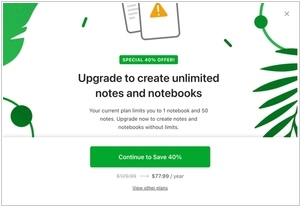
Evernote has revamped its free plan, restricting users to a single notebook and 50 notes, which now serves as the default free plan. This alteration will apply to both new and existing free users starting from December 4. In an official blog post, Evernote explained that users can manage the limit by deleting content from their notebooks to make room for new entries. Moving forward, both new and existing free users will be constrained to a maximum of fifty notes and one notebook per account. These limitations pertain to the total number of notes and notebooks a user can have concurrently, with the option to remove unwanted content to stay within the specified boundaries. Existing free account users with over 50 notes can export surplus notes and notebooks.
2021. Dropbox to acquire secure document sharing startup DocSend for $165M
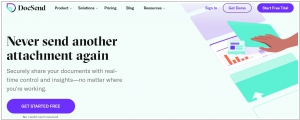
Dropbox has made a $165 million acquisition of DocSend, a service that enables customers to securely share and track documents through secure links rather than attachments. This acquisition, combined with the electronic signature capability of HelloSign (acquired by Dropbox in 2019), completes the company's end-to-end document-sharing workflow. With Dropbox, DocSend, and HelloSign working together, a comprehensive suite of self-serve products will be available to assist millions of customers in managing their critical document workflows. This integration will provide users with greater control over all aspects of their document management process.
2020. Dropbox introduces slew of new features for business
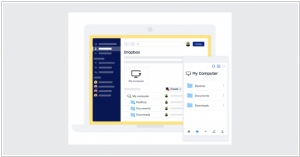
Dropbox has introduced several updates for its business users. In an effort to assist individuals in managing their numerous passwords, Dropbox is venturing into the realm of password managers, similar to LastPass or 1Password. Additionally, Dropbox is entering the online vault market, offering a secure digital space to store essential documents instead of relying on traditional safe deposit boxes. Users can share a pin with trusted individuals to provide access to important documents such as wills or insurance policies during emergencies. Furthermore, the company is expanding into the backup industry, enabling Dropbox Plus users to regularly back up the entire contents of their PC or Mac. In the event of a computer loss or complete system failure, users can easily retrieve their backed-up data.
2019. Dropbox unveiled feature to send big files
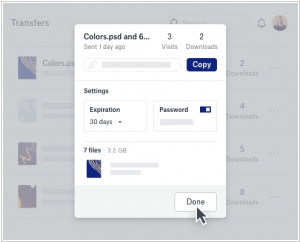
Dropbox has introduced a new feature called Dropbox Transfer, enabling users to send large files. This feature allows a maximum file size of 100 Gigabytes. Users can select files either from their local system or directly from their Dropbox account, ensuring faster sharing. It remains undisclosed whether the file size counts towards the user's storage quota. Recipients can download copies of the files, preserving the integrity of the originals. Creating a new file share requires a Dropbox account, although recipients downloading the files do not need an account themselves. Currently, the service is accessible to a limited number of customers but will be rolled out to all Dropbox users in the near future.
2019. Dropbox adds cold storage layer

Many individuals transfer files to Dropbox for backup purposes, but often these files are rarely accessed again. Hence, Dropbox engineers realized the impracticality of storing all files in the same manner, particularly when many files are not frequently accessed after the initial day of upload. To address this, the company decided to introduce two storage tiers: warm storage (formerly known as Magic Pocket) and a new long-term storage tier called Cold Storage. This approach allows Dropbox to store these files at a lower cost while still ensuring timely access if a customer needs to retrieve them. From the perspective of Dropbox customers, the engineering challenges associated with this approach are inconsequential. Their primary expectation is that when they click on a file, it should open quickly without significant latency, regardless of its age. However, Dropbox recognized an opportunity to store these files in a separate layer.
2019. Dropbox aquired e-signature service HelloSign
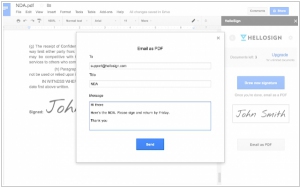
Dropbox has announced its acquisition of HelloSign for a total of $230 million. HelloSign is a company specializing in lightweight document workflow and eSignature services. This acquisition aligns with Dropbox's Extension capability, which was introduced last year, and HelloSign was among the companies involved in its launch. While Dropbox will continue to encourage companies to expand the Dropbox solution, this acquisition provides Dropbox with its own capability that does not rely on partnerships, as HelloSign is already integrated with Dropbox through Extensions. HelloSign will operate as a standalone business within the Dropbox family under the new arrangement.
2018. Dropbox expands Paper into planning tool with timelines
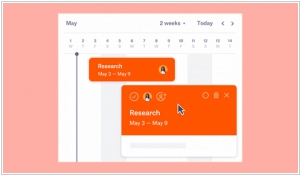
Dropbox has introduced an update to its document-driven collaboration tool, Paper. This update includes a timeline feature, expanding its capabilities beyond collaboration to serve as a lightweight project planning tool. With this feature, users can create a timeline comprising milestones. Since it is integrated within Paper, team members can be assigned to each milestone and additional information, including links to relevant documents, can be added through notes. The timeline also allows the embedding of to-do lists for task assignees, providing a centralized access point for all project participants to manage their respective tasks.
2018. Dropbox adds automatic OCR for all PDFs
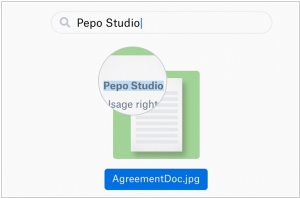
Users of Dropbox now have access to a valuable new feature: optical character recognition (OCR) that automatically transcribes text from their images and PDFs. This text recognition engine will be gradually rolled out to Dropbox Pro, Business Advanced, and Enterprise accounts in the coming months. However, administrators may be able to obtain early access by checking for availability. Once activated, the OCR functionality will scan every image and PDF in your Dropbox account, extracting the text and adding it to the file's metadata. This enables you to search for specific content within the documents. Rest assured, all the transcribed data will be treated with the same level of security as the original document. This feature proves to be quite useful, although its accuracy will determine its overall effectiveness.
2018. Dropbox improves its collaboration layer - Paper
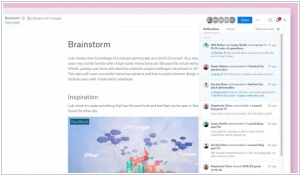
Dropbox introduces various improvements to its collaboration tool, Paper, enabling users to work seamlessly within the application without the need to switch programs. One notable enhancement is the ability to paste multiple elements into Paper and obtain live previews. Notably, it is now possible to link a Dropbox folder directly within Paper, allowing users to navigate through the files and sub-folders contained within. As the documents within the folder undergo changes, Paper automatically updates the preview, as the folder itself serves as a live link to the corresponding Dropbox folder. This feature is considered essential for a company like Dropbox. Furthermore, Dropbox now supports Airtables, an advanced type of spreadsheet. With this new enhancement, users can effortlessly embed an Airtable using its embed code and seamlessly integrate it into Paper. Once embedded, the preview in Paper displays the chosen Airtable view that the user has saved. Finally, Paper also provides support for LucidCharts. Similar to Airtables and folders, users can simply paste the LucidCharts link, enabling a live preview within Paper. Should any modifications occur in the original chart, the updates are automatically reflected in the Paper preview.
2018. Evernote refines integrations with Slack and Salesforce
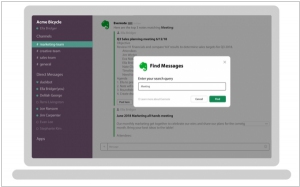
Evernote Business has introduced enhanced accessibility to Evernote content from within Slack and Salesforce. Leveraging the new Slack Actions feature, Evernote has moved away from the previous command interface style of Slack, streamlining access to Evernote content for their core knowledge workers directly within Slack. Users can now create an Evernote note in Slack, which will automatically appear in Evernote within a designated "Notes from Slack" folder. Furthermore, the updated Salesforce integration strengthens the technical connectivity between the two cloud applications. This integration allows users to "pin" a note to a record in Salesforce. Notably, there is a two-way sync feature, meaning that any changes made to a linked note in either Salesforce or Evernote will be automatically updated in both platforms, as the integration maintains a live version of Evernote.

